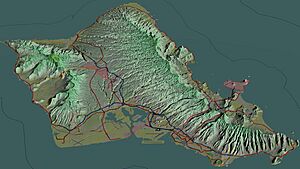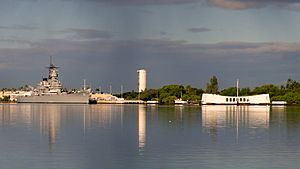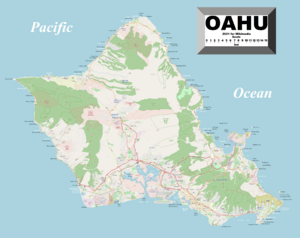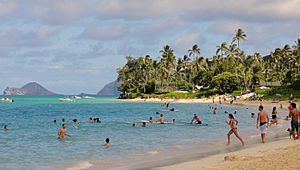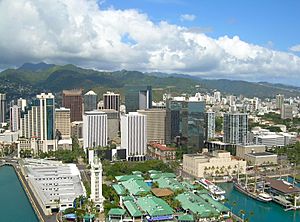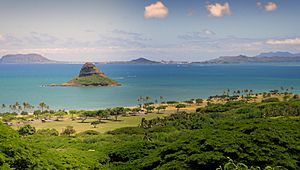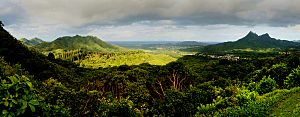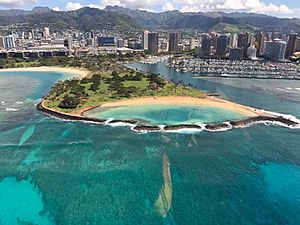Oahu facts for kids
|
Nickname: Gathering Place
|
|
|---|---|

Oblique satellite photo of Oahu
|
|
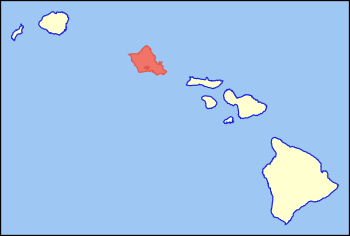 |
|
| Geography | |
| Location | 21°30′N 158°00′W / 21.5°N 158.0°W |
| Area | 596.7 sq mi (1,545 km2) |
| Area rank | 3rd largest Hawaiian Island |
| Highest elevation | 4,025 ft (1,226.8 m) |
| Highest point | Kaʻala |
| Administration | |
|
United States
|
|
| Symbols | |
| Flower | ʻilima |
| Color | Melemele (yellow) |
| Largest settlement | Honolulu |
| Demographics | |
| Population | 1,016,508 (2020) |
| Pop. density | 1,704 /sq mi (657.9 /km2) |
Oahu (pronounced oh-AH-hoo) is a beautiful island in Hawaii. It is the third largest of the Hawaiian Islands. Oahu is also the most populated island. About 70% of Hawaii's people live here.
The island of Oahu is part of the City and County of Honolulu. Honolulu, the capital city of Hawaii, is located on Oahu's southeast coast.
Contents
What's in a Name? The "Gathering Place"
Oahu is often called "The Gathering Place." This nickname means it's a place where many people come together. This translation was suggested a long time ago.
In the Hawaiian language, the word "Oʻahu" doesn't have another known meaning. The little mark in "Oʻahu" is called an ʻOkina. It's important for the correct pronunciation.
Oahu's Past: A Journey Through Time
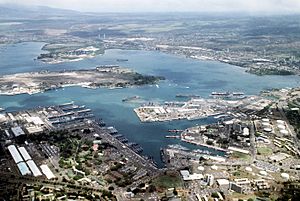
People have lived on Oahu for a very long time, since at least the 3rd century A.D. The island was once ruled by its own kings. One famous king was Maʻilikūkahi, who was known for making laws.
Later, in 1795, Kamehameha the Great conquered Oahu. He united all the Hawaiian Islands. This created the Kingdom of Hawaii.
The capital of Hawaii moved to Honolulu, Oahu, in 1845. The ʻIolani Palace was built later. It is the only royal palace in the United States.
European Arrival and Its Impact
European explorers first saw Oahu in 1778. Captain James Cook's crew spotted the island. However, Europeans didn't actually visit Oahu until 1779.
When Europeans arrived, they brought new things. They also brought diseases and animals that were not native to Hawaii. This had a big impact on the native Hawaiian people and their environment.
Pearl Harbor: A Key Moment in History
On December 7, 1941, the Imperial Japanese Navy attacked Pearl Harbor on Oahu. This surprise attack brought the United States into World War II.
The attack aimed to damage the American navy. It destroyed many ships and aircraft. Sadly, 2,335 American service members and 68 civilians lost their lives. Most of these deaths happened on the USS Arizona battleship.
After the war, Oahu became a popular place for tourists. Millions of visitors come to the island every year.
Oahu's Weather: Sunny and Warm
|
||||||||||||||||||||||||||||||||||||||||||||||||||||||||||||||||||||||||||||||||||||||||||||||||
Oahu has a warm and pleasant climate. The average temperature is usually between 70 and 85 degrees Fahrenheit (21-29°C).
The island is warmest from June to October. Winters are a bit cooler, but still warm. The average winter temperature is around 68-78 degrees Fahrenheit (20-26°C).
Oahu once had the longest rain shower ever recorded. It rained for 247 days straight from August 1993 to April 1994!
Island Geography: Mountains and Beaches
Oahu is about 44 miles (71 km) long and 30 miles (48 km) across. Its coastline stretches for 227 miles (365 km). The island covers an area of about 597 square miles (1,546 km²).
The city of Honolulu is on the island. It is the capital and largest city in Hawaii. All of Oahu is part of Honolulu County.
Oahu has many famous places. These include Waikiki Beach, Pearl Harbor, and Diamond Head. Other popular spots are Hanauma Bay, Kāneʻohe Bay, and the North Shore.
The island was formed by two large volcanoes. These are the Waiʻanae and Koʻolau Range mountains. The highest point on Oahu is Kaʻala. It rises 4,003 feet (1,220 meters) above sea level.
Exploring Oahu: Top Tourist Spots
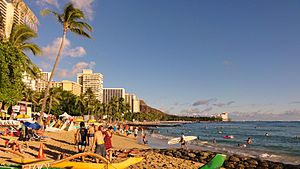
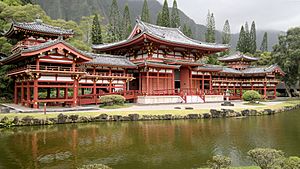
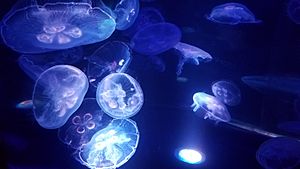
Tourism is very important to Oahu's economy. Many people visit the island each year. They come from all over the world.
There are many fun things to do on Oahu. You can relax on beautiful beaches like Waikiki Beach and Hanauma Bay.
Other popular places to visit include:
- Ala Moana Center (a large shopping mall)
- Bishop Museum (learn about Hawaiian culture and history)
- Honolulu Museum of Art (see amazing art)
- ʻIolani Palace (the only royal palace in the U.S.)
- Kualoa Ranch (famous movie filming location)
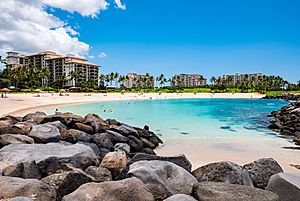
Famous Faces from Oahu
Many well-known people have connections to Oahu. Some were born there, and others lived there.
- Barack Obama: The 44th President of the United States.
- Bruno Mars: A famous singer-songwriter.
- Duke Kahanamoku: A legendary swimmer and surfer. He helped spread surfing around the world.
- Israel Kamakawiwo'ole: A beloved Hawaiian musician.
- Jason Momoa: An actor known for his roles in movies and TV.
- Markiplier (Mark Edward Fischbach): A popular Internet personality.
- Michelle Wie West: A professional golfer.
This is just a small list of the many talented people from Oahu!
Images for kids
See also
 In Spanish: Oahu para niños
In Spanish: Oahu para niños


